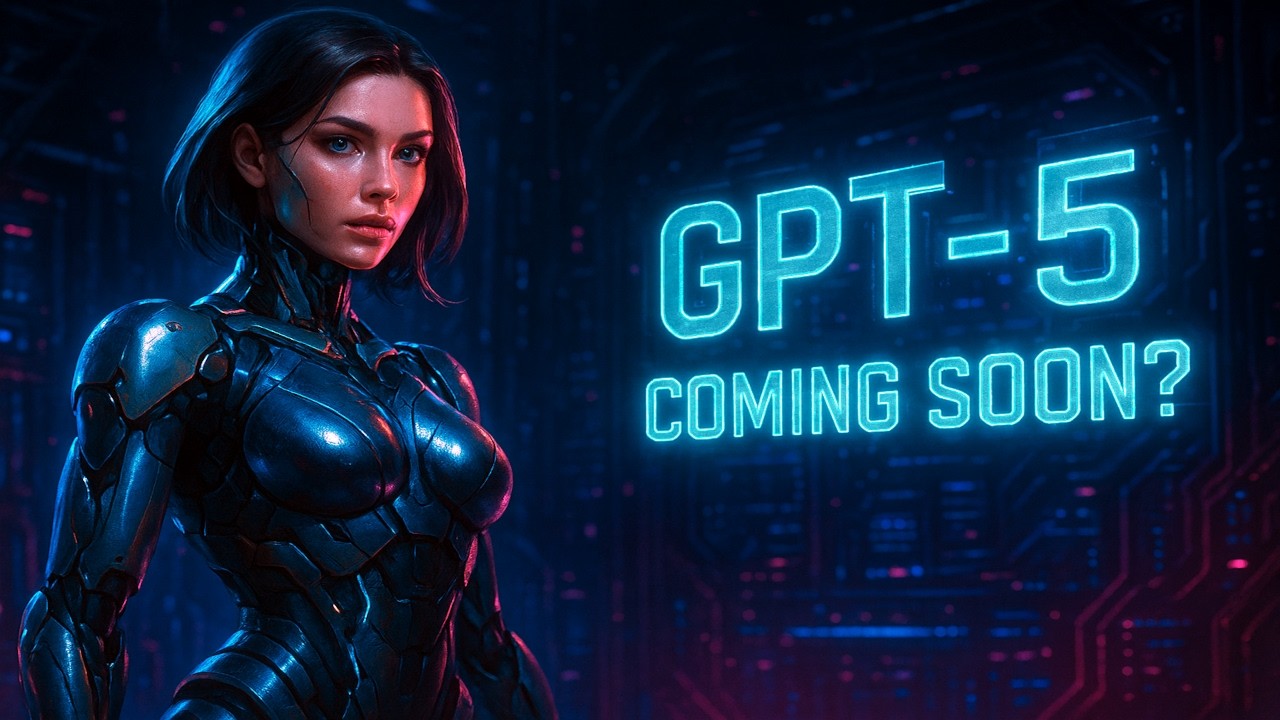The video discusses the anticipated release of GPT-5 around mid to late 2025, highlighting its expected breakthrough capabilities as a fully agentic, all-in-one multimodal model with advanced reasoning, real-time audio, and image processing features. It also outlines a future AI timeline where GPT-5 catalyzes widespread deployment of autonomous agents, leading to rapid advancements in AI-driven automation and multi-agent collaboration by the late 2020s.
The video discusses the imminent release of GPT-5, fueled by rumors and cryptic hints from OpenAI insiders. While the consensus points to a release around July or August 2025, some speculate it could be delayed until December 2025 or even early 2026 due to training complexities. The speaker emphasizes that OpenAI’s release pattern often involves long periods of silence followed by rapid developments, suggesting that GPT-5’s arrival could happen suddenly and with significant impact.
In terms of capabilities, GPT-5 is expected to represent a paradigm shift rather than incremental improvements. Enhanced reasoning is a key focus, with OpenAI doubling down on integrating reasoning abilities into their models. Although current models like GPT-3.5 show increased hallucination rates, especially in vanilla versions, improvements in reliability are anticipated. Coding capabilities are also advancing rapidly, with internal tools already being widely used by developers at OpenAI and other leading labs, creating a positive feedback loop that enhances coding performance and overall model utility.
GPT-5 is predicted to be a fully agentic, all-in-one multimodal model, supporting native voice generation, two-way real-time audio streaming, and advanced image processing. While real-time video streaming might not be included initially, video generation and understanding are likely to be part of the package, with full video streaming possibly arriving in subsequent versions. The model is expected to handle a wide range of digital data formats, moving toward a comprehensive architecture capable of understanding and generating across modalities, although some specialized data types like 3D and articulation data may still be outside its scope.
Parameter count estimates for GPT-5 vary widely, with some rumors suggesting up to one quadrillion parameters, though the speaker considers this exaggerated. More conservative predictions place the count between 5 to 50 trillion parameters, aligning with OpenAI’s shift away from pure parameter scaling toward improvements in inference and test-time compute. Architecturally, the focus is on tokenization and streaming capabilities, alongside enhanced tool use and agentic behavior. Fully autonomous agents, capable of complex workflows and real-world actions, are expected to become mainstream, with GPT-5 serving as a foundational engine for these developments.
Finally, the video outlines a timeline for AI progress, suggesting that 2025 will mark the dawn of widespread agent deployment, with 2026 seeing infrastructure scaling and mass adoption of agent SDKs. Multi-agent collaboration and autonomous ecosystems are anticipated by 2027, alongside the rise of hybrid human-AI teams. By 2029 and 2030, oversight AI and superintelligent agents are expected to dominate, automating the vast majority of digital workflows. The speaker believes these timelines are conservative, predicting faster advancements and earlier breakthroughs, with GPT-5 playing a central role in ushering in this new era of AI-driven automation and intelligence.
